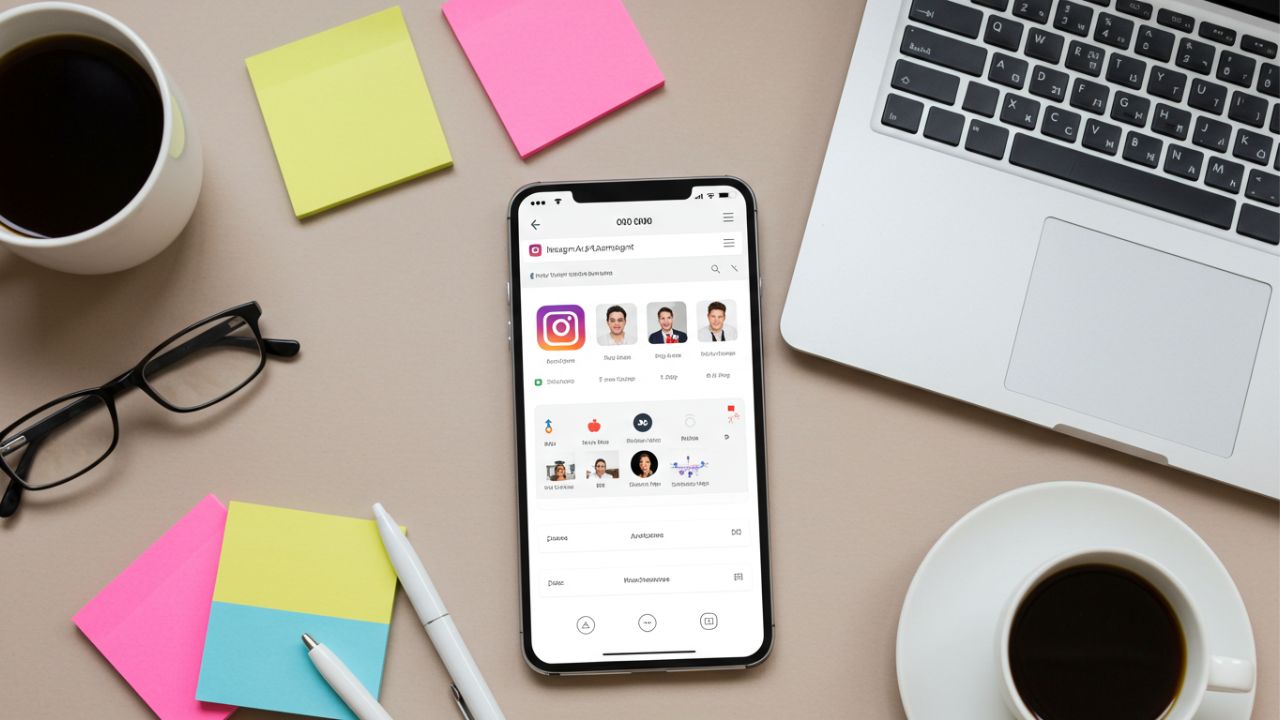Instagram isn’t just a platform for sharing selfies, food pics, and vacation shots—it’s one of the most powerful digital marketing tools available today. With over 2 billion monthly active users, the platform offers incredible opportunities for businesses and creators to reach, engage, and convert their audience through Instagram Ads.
If you’ve never run an Instagram ad before, the process might seem intimidating. But don’t worry—this step-by-step beginner’s guide will walk you through everything you need to know: from understanding ad formats to budgeting, targeting, and analyzing results.
1. Why Use Instagram Ads?
Before diving into the technical aspects, let’s look at why Instagram Ads are so powerful:
- Massive audience reach 📈 – Over 500 million people use Instagram Stories every day.
- Highly engaged users ❤️ – Engagement rates are much higher than on most other social platforms.
- Visual-first platform 🎨 – Ideal for products, services, and brands that benefit from visual storytelling.
- Advanced targeting 🎯 – Use Facebook’s Ads Manager to target users based on demographics, interests, behaviors, and more.
- Integration with Facebook Ads – One campaign can run across both Instagram and Facebook for maximum exposure.
2. How Instagram Ads Work
Instagram Ads operate through Meta Ads Manager (formerly Facebook Ads Manager). You can create, customize, and run your campaigns there—or promote posts directly from your Instagram account.
Two main methods:
| Method | Description | Best For |
|---|---|---|
| Boosting a Post | Turn an existing Instagram post into an ad directly from the app. | Beginners, quick promotions |
| Creating in Ads Manager | Full control over targeting, budget, creatives, and analytics. | Advanced campaigns, split testing |
3. Instagram Ad Formats
There’s no “one size fits all” for Instagram ads. Choosing the right format depends on your campaign goals.
a) Photo Ads
- Best for: Showcasing a single product or service.
- Pro Tip: Use high-quality, lifestyle-oriented images instead of plain product shots.
b) Video Ads
- Best for: Demonstrations, tutorials, or storytelling.
- Duration: 3 seconds to 60 minutes (depending on placement).
- Pro Tip: Hook viewers in the first 3 seconds.
c) Carousel Ads
- Best for: Multiple products, features, or steps in a process.
- Pro Tip: Use a consistent theme so swiping feels seamless.
d) Stories Ads
- Best for: Full-screen, immersive experiences.
- Duration: 15 seconds per story card.
- Pro Tip: Add interactive elements like polls or stickers.
e) Reels Ads
- Best for: Reaching younger, trend-savvy audiences.
- Pro Tip: Follow popular music and effects trends.
f) Shopping Ads
- Best for: E-commerce brands.
- Pro Tip: Tag products directly to shorten the purchase journey.
4. Setting Campaign Goals
Instagram Ads are objective-based, meaning you choose your desired outcome before launching.
| Campaign Objective | Goal |
|---|---|
| Awareness | Reach as many people as possible. |
| Traffic | Send people to your website or app. |
| Engagement | Get likes, comments, shares. |
| Leads | Collect customer information. |
| Sales/Conversions | Drive purchases or sign-ups. |
5. Understanding Targeting
One of Instagram Ads’ biggest strengths is its precision targeting.
Targeting Options:
- Demographics: Age, gender, location.
- Interests: Hobbies, brands followed, content engaged with.
- Behaviors: Purchase history, device use.
- Custom Audiences: Upload your own customer lists.
- Lookalike Audiences: Target people similar to your best customers.
6. Crafting the Perfect Ad
Your ad needs to grab attention, engage, and inspire action.
Key elements:
- Eye-catching visual (photo, video, or carousel)
- Compelling headline (short & impactful)
- Clear CTA (Call-to-Action) – e.g., “Shop Now,” “Learn More”
- Authenticity – People respond better to real, relatable content than overly polished stock images.
7. Budgeting for Instagram Ads
Instagram Ads run on a bidding system. You can set:
- Daily Budget: Spend a fixed amount per day.
- Lifetime Budget: Spend over a set campaign duration.
Cost factors:
- Audience size
- Competition for that audience
- Placement (Stories, Feed, Reels, etc.)
- Quality and relevance of your ad
Average CPC (Cost Per Click): $0.50 – $3.00 depending on niche.
8. Running Your First Ad – Step by Step
From the Instagram App (Boost a Post):
- Go to your post.
- Tap Boost Post.
- Select your goal (More profile visits, website visits, or messages).
- Define audience targeting.
- Set budget and duration.
- Launch and monitor results.
From Meta Ads Manager:
- Go to Ads Manager.
- Click Create → Choose campaign objective.
- Name your campaign.
- Set targeting, placements, and budget.
- Upload creatives (photos/videos).
- Write captions & select CTA.
- Review and publish.
9. Tracking and Measuring Success
Key metrics to track:
- Reach – Number of unique people who saw your ad.
- Impressions – Total times your ad was shown.
- Engagement Rate – (Likes + Comments + Shares) ÷ Impressions.
- CTR (Click-Through Rate) – Clicks ÷ Impressions.
- Conversion Rate – Purchases ÷ Clicks.
- ROAS (Return on Ad Spend) – Revenue ÷ Ad spend.
10. Common Mistakes to Avoid
❌ Using low-quality images/videos
❌ Targeting too broad of an audience
❌ Ignoring analytics
❌ Forgetting mobile optimization
❌ Not testing multiple creatives
11. Advanced Tips for Scaling Ads
- A/B Testing – Test headlines, images, and CTAs.
- Retargeting – Re-engage people who visited your site but didn’t convert.
- Dynamic Ads – Automatically show products based on user behavior.
- Sequential Storytelling – Run a series of ads telling a narrative.
12. Final Thoughts
Instagram Ads can be one of the most effective tools in your digital marketing toolkit—but only if you understand how to use them strategically. Start small, analyze your results, refine your targeting, and keep testing creatives.
Pro Tip: Instagram’s algorithm rewards advertisers who keep their content fresh and engaging—so keep experimenting!

Leave a Reply